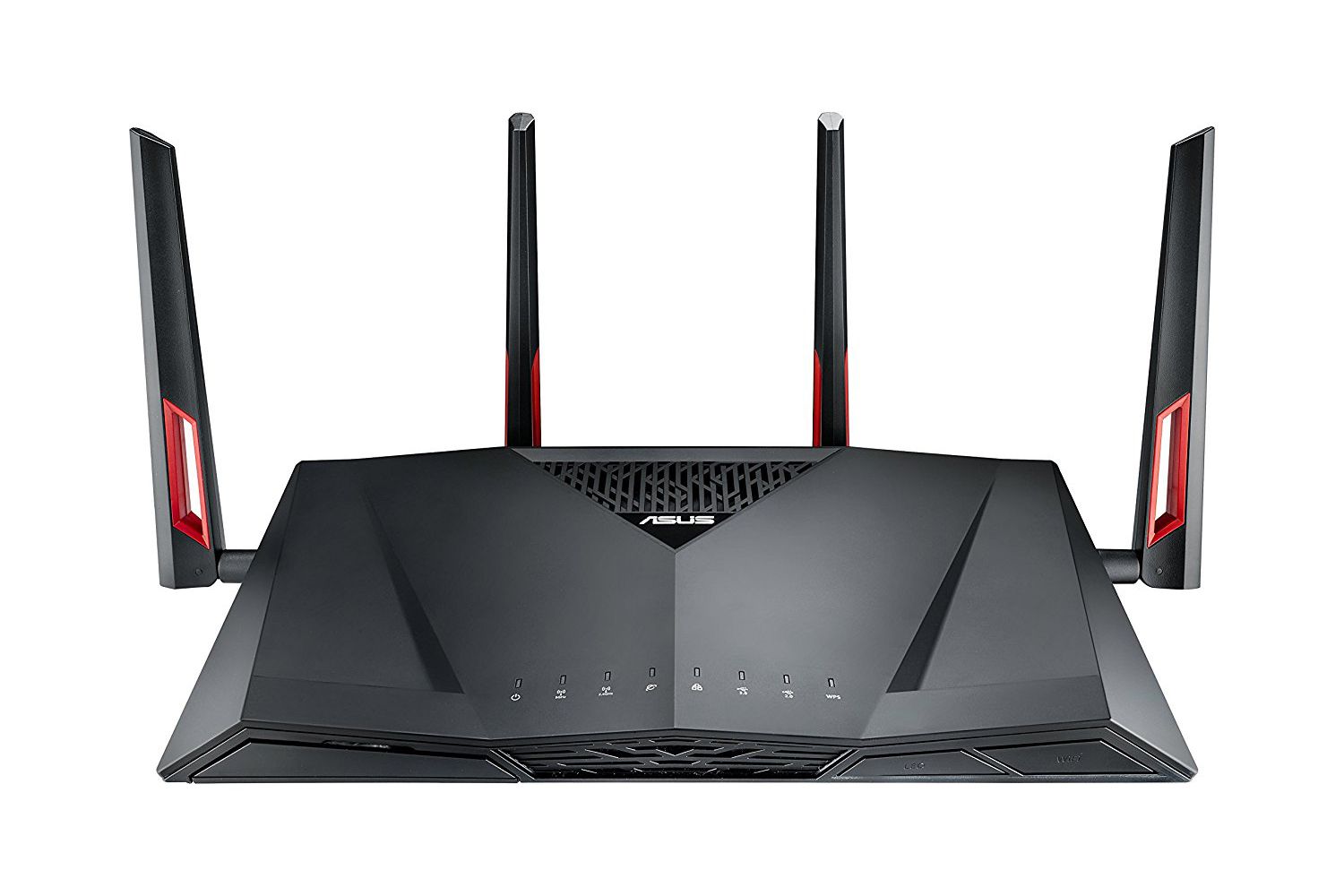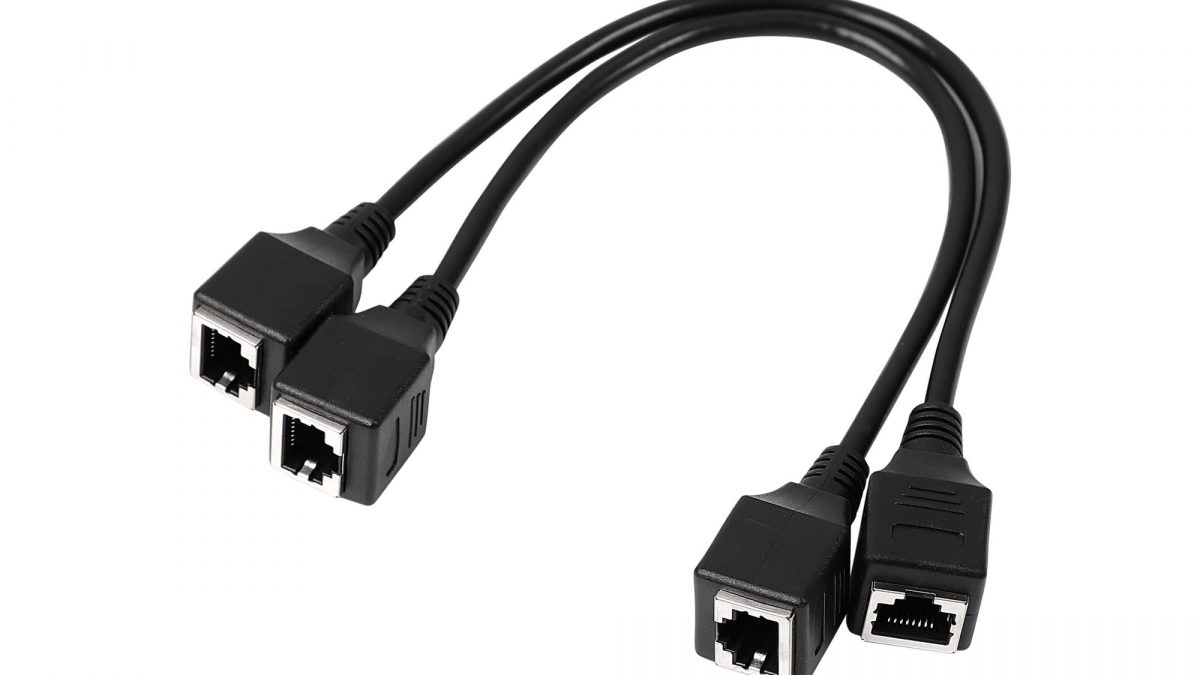Introduction
Routers have become an essential part of our daily lives, providing us with a reliable and fast internet connection. They allow us to connect multiple devices and stream content seamlessly. However, like any electronic device, routers have a finite lifespan. If you’ve ever wondered how long a router can last, you’re not alone. Knowing the lifespan of your router can help you plan for future upgrades and ensure that you’re getting the most out of your investment.
While it would be convenient to give a specific number of years as an answer, the lifespan of a router can vary greatly depending on several factors. Understanding these factors can help you make informed decisions when it comes to choosing a router and maintaining it for optimum performance.
In this article, we explore the various factors that can affect the lifespan of a router. We delve into the quality of components, usage intensity, environmental conditions, and technological advancements, all of which play a role in determining how long your router will last. Additionally, we provide tips on how to identify signs that your router may be failing and offer suggestions on how to extend its lifespan.
Whether you’re a tech enthusiast or someone who relies on a stable internet connection for work, understanding the lifespan of your router can help you save money, avoid frustrating connectivity issues, and stay up-to-date with the latest technological advancements.
So, let’s dive into the world of routers and find out just how long these remarkable devices can stay connected to our digital lives.
Factors that Affect Router Lifespan
The lifespan of a router can be influenced by several factors. Understanding these factors can help you make informed decisions when it comes to purchasing a new router and maintaining it for optimal performance. Here are some key factors that can significantly impact the lifespan of your router:
Quality of Components: The quality of the components used in a router plays a significant role in its longevity. Routers made with high-quality materials and components are more likely to have a longer lifespan compared to those made with cheaper or inferior parts. Investing in a reputable brand known for its quality can ensure a longer-lasting router.
Usage Intensity: The amount of usage your router experiences can also affect its lifespan. Routers that are subjected to heavy usage, such as streaming high-definition videos, online gaming, or multiple connected devices, may experience more strain on their components, leading to a shorter lifespan. It’s important to consider your usage needs and choose a router that can handle the demand.
Environmental Conditions: The environment in which the router is placed can have an impact on its lifespan. Factors such as temperature, humidity, and dust can affect the performance and longevity of the router. Routers should be kept in a well-ventilated area, away from direct sunlight, and protected from extreme temperature fluctuations. Regular cleaning and maintenance can also help prevent dust buildup and ensure proper airflow.
Technological Advancements: The rapid pace of technological advancements can render older routers outdated. As new technologies emerge and internet speeds increase, older routers may struggle to keep up with the demands of modern devices and applications. While upgrading your router may not be necessary every time a new technology is introduced, it’s important to stay informed and consider upgrading if your current router is significantly outdated.
Taking these factors into consideration will help you assess the lifespan of your router and make informed decisions about when to replace or upgrade it. In the next section, we will explore signs that indicate your router may be reaching the end of its lifespan, so you can be prepared for any potential issues that may arise.
Quality of Components
The quality of components used in a router heavily influences its lifespan. Routers made with high-quality materials and components tend to last longer and provide a more reliable performance. On the other hand, routers with cheaper or inferior parts may experience more frequent failures and a shorter overall lifespan.
When it comes to router components, several factors affect their quality. Let’s take a closer look at these factors and how they impact the lifespan of your router:
Processor: The processor in a router is responsible for handling data packets and routing them to the appropriate devices. A powerful and efficient processor can handle high data loads and ensure smooth internet connectivity. Routers with more advanced processors tend to perform better and last longer.
Memory: The amount and type of memory in a router play a crucial role in its performance and lifespan. More memory allows the router to handle a higher number of devices and applications simultaneously without any lag. Additionally, routers with higher-quality memory have a lower chance of experiencing data loss or corruption.
Antennas: The antennas in a router are responsible for transmitting and receiving data signals. Higher-quality antennas provide better range and signal strength, allowing for more reliable connections even in larger homes or offices. Routers with detachable or adjustable antennas offer flexibility and can adapt to different environments or connectivity needs.
Build Materials: The materials used in the construction of a router can also impact its lifespan. Routers made with durable and high-quality materials are more resistant to wear and tear, ensuring a longer lifespan. Additionally, routers with proper ventilation systems and heat dissipation mechanisms can prevent overheating and extend their lifespan.
Brand Reputation: The reputation of the brand that manufactures the router is an important aspect to consider when assessing the quality of its components. Established brands with a track record of producing reliable and long-lasting routers are generally a safer choice. They invest in rigorous testing processes to ensure the quality and durability of their routers.
By investing in a router with high-quality components, you can expect a longer lifespan and a more reliable internet connection. However, it’s important to note that routers with better components often come with a higher price tag. It’s a good idea to strike a balance between your budget and the desired quality when choosing a router.
In the next section, we will explore how the intensity of router usage can impact its lifespan and provide tips on optimizing router usage to extend its longevity.
Usage Intensity
The intensity of router usage is another important factor that can significantly impact its lifespan. How heavily you use your router, including the number of devices connected and the type of activities performed, plays a role in the wear and tear of its components.
Here are some key factors to consider when assessing the usage intensity of your router:
Number of Devices: The more devices connected to a router, the higher the strain on its components. Each connected device consumes a portion of the router’s resources, including processing power and bandwidth. If you have several devices connected simultaneously, such as smartphones, laptops, smart TVs, and gaming consoles, the router may experience higher usage intensity, which can reduce its lifespan.
Streaming and Gaming: Streaming high-definition videos, online gaming, and other bandwidth-intensive activities put additional stress on a router. These activities require a stable and fast internet connection, and the router needs to work harder to handle the increased data traffic. If you frequently engage in these activities, it’s important to choose a router that can handle the demands and has the necessary processing power and bandwidth capacity.
Download and Upload Traffic: The volume of download and upload traffic passing through the router can also affect its lifespan. Large file transfers, frequent downloads, and data-heavy uploads, such as video uploads or cloud backups, can strain the router’s components. Routers with higher data throughput capabilities and advanced processing power are better equipped to handle high traffic volumes.
Prolonged Usage: Leaving your router on continuously without giving it any rest can lead to increased usage intensity. Routers need occasional breaks to cool down and recover from constant usage. If possible, consider turning off the router during extended periods of inactivity or schedule regular restarts to maintain its performance and extend its lifespan.
To optimize the lifespan of your router and ensure its longevity, it’s important to consider your usage habits and choose a router that can handle your specific needs. Additionally, periodic maintenance, such as updating firmware, monitoring device connections, and managing bandwidth usage, can help alleviate strain on the router’s components and extend its lifespan.
In the next section, we will explore how environmental conditions can impact the lifespan of your router and provide tips on creating an ideal environment for your router to thrive.
Environmental Conditions
The environmental conditions in which a router operates can have a significant impact on its lifespan. Factors such as temperature, humidity, and dust can affect the performance and longevity of the router. Creating an ideal environment for your router can help ensure its optimal functioning and extend its lifespan.
Here are some key environmental factors to consider when it comes to your router:
Temperature: Routers are designed to operate within a specified temperature range. Extreme temperatures, whether too hot or too cold, can affect the components and reduce the lifespan of the router. It is best to keep your router in a well-ventilated area with a temperature range of 0 to 40 degrees Celsius (32 to 104 degrees Fahrenheit).
Humidity: High levels of humidity can cause moisture buildup, leading to corrosion of the router’s internal components. It is advisable to keep your router in a dry environment to prevent any potential damage. Avoid placing it near sources of moisture, such as bathrooms, kitchens, or areas prone to water leaks.
Dust and Debris: Dust and debris can accumulate on the router’s vents and obstruct airflow, leading to overheating and potential damage. Regularly clean your router by gently wiping the exterior with a soft, dry cloth and use compressed air to remove dust from the vents. Keep your router elevated to minimize dust settling on the device.
Placement: Proper placement of the router is crucial for maintaining a stable and reliable connection. Avoid placing the router in enclosed spaces or inside cabinets where airflow is limited. Ideally, position it in a central location within your home or office to ensure equal coverage and minimize signal interference. Also, keep it away from obstructions such as walls, large furniture, or other electronic devices that can disrupt the signal.
Power Outages and Voltage Surges: Frequent power outages or voltage surges can damage the router’s internal circuitry. To protect your router from these electrical issues, consider using a surge protector or uninterruptible power supply (UPS). These devices can regulate the power supply and provide additional protection against power fluctuations.
Creating an optimal environment for your router can help prolong its lifespan and ensure consistent performance. Keeping your router in a cool, dry, and clean location, away from potential sources of damage or signal interference, will contribute to the longevity and reliability of your router.
In the next section, we will explore how technological advancements impact the lifespan of routers and why staying up-to-date with the latest technologies is important.
Technological Advancements
Technological advancements play a significant role in the lifespan of routers. As new technologies emerge and internet speeds increase, older routers may struggle to keep up with the demands of modern devices and applications. Staying up-to-date with the latest technologies is important to ensure optimal performance and extend the lifespan of your router.
Here are some key points to consider regarding the impact of technological advancements on router lifespan:
Compatibility: Advancements in networking protocols and standards, such as Wi-Fi 6 (802.11ax), enable faster data transmission speeds and improved network performance. If your router does not support these newer standards, you may experience limitations in terms of speed, coverage, and device compatibility. Upgrading to a router that supports the latest technologies can significantly enhance your overall internet experience.
Security Features: Cybersecurity threats continue to evolve, and router manufacturers continually develop new security features to protect against these threats. Older routers may lack the necessary built-in security measures, leaving your network vulnerable to attacks. Upgrading to a newer router with advanced security features can help safeguard your network and ensure a safer online experience.
Performance: Newer routers often have more powerful processors, increased memory, and enhanced capabilities to handle the increasing demands of modern internet-connected devices. These improvements result in better performance, faster speeds, and improved stability. Upgrading to a more advanced router can ensure smooth streaming, online gaming, and seamless connectivity for all your devices.
Future-Proofing: The lifespan of a router is also influenced by its ability to adapt to future technological advancements. Investing in a router that is future-proof, meaning it has the capacity to support upcoming technologies and standards, can prolong its usability without the need for frequent upgrades. It’s important to research and choose a router that has a track record of firmware updates and has the potential to stay relevant for a longer period.
While it may not be necessary to upgrade your router every time a new technology is introduced, staying informed about the latest advancements can help you make informed decisions about when to consider upgrading your current router. It’s a balance between choosing a router that meets your current needs and has the potential to support future requirements.
In the next section, we will explore signs that indicate your router may be nearing the end of its lifespan, so you can be prepared for any potential issues that may arise.
Signs that Your Router is Failing
Routers, like any electronic device, can show signs of failure as they near the end of their lifespan. Being aware of these signs can help you identify potential issues before they become major problems. Here are some common signs that indicate your router may be failing:
Intermittent Connectivity: If you notice that your internet connection frequently drops or becomes unreliable, it could be a sign that your router is failing. This could be due to hardware issues or overheating within the router.
Slow Internet Speeds: If you notice a sudden and persistent decrease in internet speeds, even when no other devices are connected or in use, it may indicate a router problem. Sluggish performance can be a sign of outdated hardware or a failing router.
Frequent Router Restarting: If you find yourself needing to frequently restart your router to maintain a stable connection, it may be a sign of underlying issues. While occasional restarts are normal, excessive restarts can indicate a failing router.
Overheating: Routers generate heat during operation, but if you notice that your router feels excessively hot to the touch, it could be a sign of overheating. Overheating can cause performance issues and potentially damage internal components.
Unresponsive or Frozen Router: If your router becomes unresponsive, freezes, or requires constant manual intervention to function properly, it could be an indication of a failing router. This may be due to hardware or firmware issues.
Hardware Failures: Physical signs like visible damage, loose or damaged connectors, or persistent blinking lights can indicate hardware failures within the router. These failures can affect the overall performance and reliability of your network.
Outdated Firmware: If you have not updated your router’s firmware in a long time, it can result in compatibility issues, security vulnerabilities, and performance degradation. Regular firmware updates are essential to keep your router functioning optimally.
If you experience any of these signs, it is worth troubleshooting the issue and considering the possibility that your router may be failing. In some cases, simple solutions, such as updating firmware or relocating your router, may resolve the problem. However, if the issues persist and the router is past its expected lifespan, it may be time to consider replacing it.
In the final section, we will discuss strategies for extending your router’s lifespan and maximizing its longevity.
How to Extend Your Router’s Lifespan
While routers have a limited lifespan, there are several proactive steps you can take to extend their longevity and ensure optimal performance. Here are some strategies to help you prolong the lifespan of your router:
Keep the Router Cool: Overheating can shorten the lifespan of your router. Ensure that it is placed in a well-ventilated area, away from direct sunlight and other heat sources. Regularly dust the router to prevent dust buildup, which can obstruct airflow and contribute to overheating.
Update Firmware Regularly: Check for firmware updates periodically and keep your router’s firmware up to date. Firmware updates often contain bug fixes, security patches, and performance improvements that can help maintain the router’s stability and functionality.
Limit Intensive Activities: Avoid overloading your router with bandwidth-intensive activities such as heavy gaming or multiple simultaneous video streams. These activities can strain the router’s components and increase wear and tear. Consider prioritizing critical activities or investing in higher-capacity routers to handle such demands.
Manage Connected Devices: Limit the number of connected devices to your router, especially if it’s an older model with limited capabilities. Unnecessary devices consume resources and can put stress on the router. Regularly monitor and disconnect devices that are no longer in use or not essential.
Secure Your Network: Implement robust security measures to protect your router from external threats. Set up strong Wi-Fi passwords, enable encryption, enable the router’s built-in firewall, and regularly change your router’s admin password. This will prevent unauthorized access and reduce the risk of potential attacks that can compromise your router’s lifespan.
Perform Regular Maintenance: Routinely clean your router, including the exterior and dusting the vents to prevent debris accumulation. Check for loose cables or damaged connectors and replace them if necessary. Regularly inspect and clean the router’s antennas to ensure optimal signal strength.
Consider Router Placement: Ensure that your router is positioned in a central location within your home or office to maximize coverage. Avoid placing it near barriers or sources of interference such as walls, large furniture, or other electronic devices that can weaken the signal. This will help reduce strain on the router and ensure a more stable connection.
By adhering to these practices, you can extend the lifespan of your router and enjoy reliable internet connectivity for a longer period. However, it’s important to keep in mind that even with proper care, routers will eventually reach their end of life. When the time comes, consider upgrading to a newer model that incorporates the latest technologies and features, ensuring better performance and longevity for years to come.
Conclusion
Routers are a crucial component of our modern-day connectivity, allowing us to access the internet and enjoy seamless communication. Understanding the factors that influence router lifespan is essential for making informed decisions when purchasing, maintaining, and upgrading routers.
Factors such as the quality of components, usage intensity, environmental conditions, and technological advancements all play a significant role in determining how long a router can last. Investing in a router with high-quality components, managing usage intensity, creating an optimal environment, and staying up-to-date with technological advancements can help extend the lifespan of your router and ensure optimal performance.
By being aware of the signs that indicate a failing router, such as intermittent connectivity, slow internet speeds, or hardware failures, you can take appropriate action to troubleshoot or replace the router as necessary. Regular maintenance, updating firmware, and implementing robust security measures are equally important in maximizing the lifespan of your router.
While routers do have finite lifespans, taking proactive steps to care for your router can help you get the most out of your investment and enjoy reliable and high-speed internet connectivity for an extended period. When the time comes for an upgrade, consider investing in a router that incorporates the latest technologies and offers future-proof features to ensure longevity.
So, whether you’re a tech enthusiast, a remote worker, a gamer, or a casual internet user, understanding how to extend your router’s lifespan is vital for optimizing your internet experience and staying connected in our increasingly digital world.

























